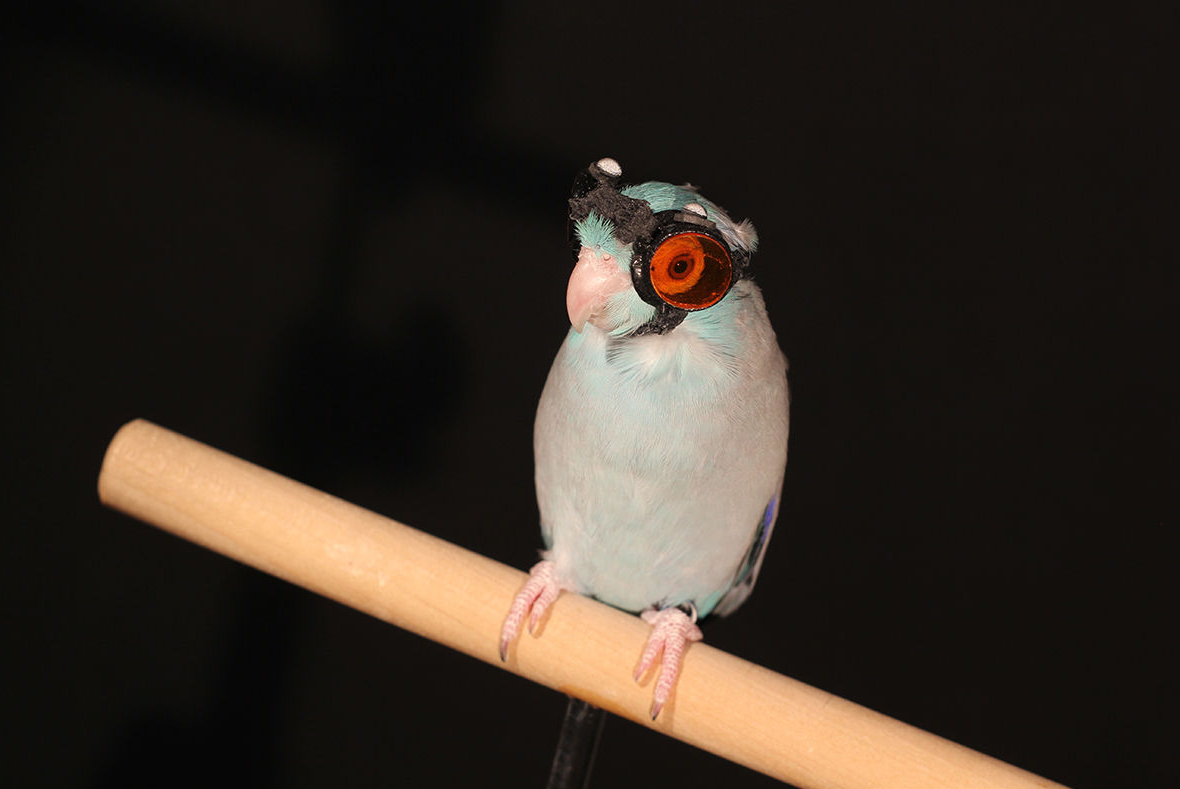
Picture this: A tiny Pacific parrotlet blazing through the air decked with red-tined pilot goggles, a joint pairing between cuteness and science that ticks off every box of what makes interesting content. The parrot in question is Obi, a Pacific parrotlet recruited by scientists from the California laboratory to study biological flight dynamics and learn how to innovate autonomous flying robot design with the help of nature. Obi wears goggles to protect his eyes as he dashed through water particles illuminated by a laser.
As Obi flaps through the particles, his wings generate patterns of disruptive waves within the airflow similar to the wakes that swimmers leave behind in the water. Measuring and analyzing the particle trail provided an unprecedented level of accuracy into the forces required to keep flyers afloat and propel them forward that overturned previous understanding of airflow physics.
Obi helped scientists capture data by flying between two perches positioned at about three feet apart, through a very fine mist of water particles measuring “only one micron in diameter,” said study author David Lentink, an assistant professor of mechanical engineering at Stanford University. While he flew, a high-speed laser flashing on and off at a rate of 1,000 times per second hit the water droplets and scattered, creating a visible air pattern which was then captured by a high-speed camera shooting 1,000 frames per second.
The results showed something unexpected: vortices created by the initial flapping of Obi’s wings disintegrated almost immediately after two or three subsequent wing beats—meanwhile computer model predicted that vortices remain relatively stable for a few seconds once formed.
“We were surprised to find the vortices that are usually drawn in papers and textbooks as beautiful donut rings turned out to break up dramatically after two to three wing beats,” Lentink told Live Science in an email. This means that the flight models used to calculate an animal’s lift based on the wake it produced, are most likely incorrect.
“Thanks to the high-speed recording, we were able to capture this and play it back in slow-motion, so we could see with our eyes how the vortices break up and make it hard for the models to predict lift well,” Lentink said.
Lentink’s team tested three additional different models, inserting multiple measurements of the air patterns from Obi’s flights, and comparing the models’ lift estimate to their own. Unsurprisingly, none of the models matched the scientists’ calculations.
“Many people look at the results in the animal flight literature for understanding how robotic wings could be designed better,” Lentink said in a statement. “Now, we've shown that the equations that people have used are not as reliable as the community hoped they were. We need new studies, new methods to inform this design process much more reliably.”
Now that scientists understand the there’s no single model to explain winged flight; they can begin reassessing what existing knowledge and build updated models. Given the large degree of animals possessing the ability to fly, it’s likely that even greater variation exists in models—suggesting that current understanding is grossly oversimplified. Updating them all could improve the flying robot design.
Source: Livescience
Advertisement
Learn more about Electronic Products Magazine





